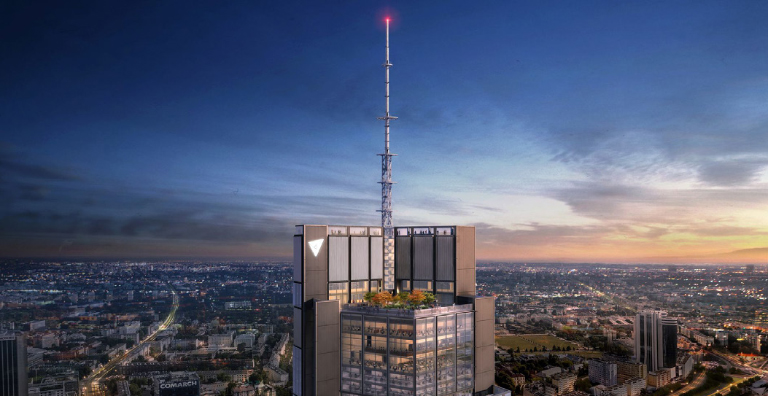Mobile Access Augments User Experience In Commercial Real Estate
Digital transformation is one of the factors disrupting the commercial real estate market (CRE). Many of the same factors shaping the industry pre-pandemic, including on-demand expectations, technology enabled facilities, and personalized experiences continue to shape it after COVID-19. Today, the CRE industry is balancing a blend of digital and physical solutions with health and safety utilizing technologies such as mobile access control.
What is Mobile Access Control?
Mobile access control is the utilization of hardware and software access control components to create a digital method for authenticating identity and granting entry to access points for employees, contractors and visitors utilizing a smart device as the credential. Mobile access creates a seamless user experience that increases convenience, and in return maximizes security. In addition, mobile access offers health and safety benefits through over the air provisioning and native touchless functionality.
Why is Mobile Access Control Important for Commercial Real Estate?
According to Deloitte’s 2022 Commercial Real Estate Outlook, many firms continue to use legacy technology and focus on retrofitting, missing opportunities to incorporate emerging solutions that can’t easily be integrated into unmodernized core systems. Although technology investment is a priority for only about one-fourth of respondents, there is acknowledgment among the industry that tenants want superior experiences enabled by as-a-service models. Firms who recognize that an exceptional experience goes beyond the tenant to engaging users of CRE spaces can adjust to these new market realities. This means that IoT and mobile application technologies, including the integration of mobile access control and touchless building access control systems, can be utilized to create superior user experiences.
HB Reavis: A Case Study in Mobile Access Control and Tenant Experience
HB Reavis is one such forward-looking CRE firm. An international workspace and mixed-use real estate developer, HB Reavis puts both tenants and end users — including the tenant’s employees, building residents, clientele and shoppers — at the heart of every business decision. Technology and wellbeing go hand-in-hand for the organization responsible for such projects as 33 King William Street, Agora Budapest and most recently, Varso Place.
Varso Place is HB Reavis’ largest office development in the European Union, featuring 70,000 square meters of space across 53 floors that rise 310 meters above Warsaw, Poland. Set to become the tallest building in the European Union, the development required that more than 7,000 people be able to move freely throughout the building. This included accommodating public access on the lower floor’s shops and restaurants, as well as an observation deck offering spectacular city views.
Creating Enhanced User Experiences With Mobile Access Control App Integration
We’ve proudly partnered with HB Reavis for over 15 years across a variety of projects. During the planning of Varso Place, HB Reavis needed a single access system for the entire building environment. The list of requirements was challenging: the access control solution needed to be modern to complement building aesthetics, flexible to handle multiple credentials and devices and simple to use for security managers, tenants and end users. In addition, the access control solution had to easily integrate into the HB Reavis More app, which covered all Varso Place services and experiences beyond building access, such as concierge, events, room booking systems, and car or bike sharing services.
Today, Varso Place relies on HID Mobile Access® to enable secure and flexible building access through its More app for tenants and those using public spaces on the ground level. More than 7000 people access parking, elevators and doors utilizing Bluetooth Low Energy (BLE) and Near Field Communication (NFC) enabled readers that support a broad array of high frequency and low frequency credentials across multiple form factors, including mobile IDs. Tenants and employees who choose to utilize the mobile access solution benefit from using their smart device and a mobile ID for seamless access through their entire building journey, including rooms and floors not accessible to the public.
HB Reavis gained budget efficiencies by using one access control solution through its entire building. Mobile access was especially helpful during the pandemic, as it promoted health with a touchless access control experience for users and a remote management experience for security personnel. The solution also enables HB Reavis to be future-ready with the mobile access software developer kit that can be used to make updates as needs change.
Learn More About Mobile Access Control in the Commercial Real Estate Case Study
As commercial real estate begins to envision its future, it’s impossible to imagine it without a shift toward a service mindset for elevated user experiences. Old ideas such as “location is everything” will give way to the new mottos of “experience is everything” and “everything-as-a-service.”
Learn more about HB Reavis' journey to mobile access control by reading the case study. You can also explore the insights in the Foundation of a CRE Ecosystem: How to Leverage Physical Access Control for a Better Tenant Experience to find out how access control technologies like HID Mobile Access are reducing friction points and providing safe, secure spaces for people and assets.
Troy Johnston has worked in the electronic security industry since 1996 and now leads business development within the Commercial Real Estate sector for HID Global helping customers deploy mobile access control solutions.
